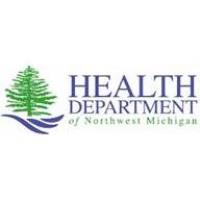Eat Safe, Stay Healthy: 2025 Eat Safe Fish Guides Released
Helping residents make safer fish choices
Whether you’re casting a line for fun or putting dinner on the table, knowing which fish are safe to eat is just as important as reeling in a big catch. Michigan’s lakes and rivers offer great fishing, but not all fish are created equal when it comes to health. Before you fry up your next catch, check the facts with your regional Eat Safe Fish Guide. The guidelines are based on the levels of chemicals found in parts of the fish most commonly eaten, the filets.
“Eat Safe Fish Guides are not rulebooks but are helpful guidelines to support safe and healthy choices for you and your family,” says Jeremy Fruk, Director of Environmental Health. “They are developed to protect everyone, including healthy adults looking to reduce chemical exposure, children, pregnant or breastfeeding individuals, and those with health conditions, like cancer or diabetes. I recommend reviewing the guide every year as it can change based on new sampling efforts.”
Making the Guide
The Michigan Department of Environment, Great Lakes, and Energy (EGLE) conducts year-round fish contaminant monitoring, collecting samples from sites with known or suspected contamination and popular fishing locations. Each year, the Michigan Department of Health and Human Services requests specific species from selected lakes and rivers. EGLE then measures, weighs, and prepares the fish for testing.
What Fish Are Safest?
In general, bluegill, burbot, and sunfish are among the safest species to eat from across Michigan. Safety does vary by location, the guide provides detailed, county-by-county information to help you make informed choices. Below are the safest species to consume within our four-county region:
• Antrim: Perch and other Panfish
• Charlevoix: Bullhead, Brown Trout, and other Panfish
• Emmet: Bullhead and other Panfish
• Otsego: Yellow Perch and other Panfish
The Three Cs
The guidelines not only identify the safest fish to eat but also offer serving size recommendations and outline the ‘Three Cs’ of fishing to help reduce chemical exposure. So, what are the Three Cs?
• Choose: the safest fish to eat, especially if you eat fish often,
• Clean: remove the fat, skin and organs, as chemicals often are stored in these areas,
• Cook: grill or broil your fish to help reduce chemical-carrying fat—these methods are also healthier.
To access the Eat Safe Fish Guide for Antrim, Charlevoix and Emmet counties click here. To access the Eat Safe Fish Guide for Otsego click here. To stay updated on all health-related news, subscribe to our monthly newsletter here. If you're looking for more information about HDNW, call us locally at 800-432- 4121 or visit our website at nwhealth.org



.jpg)